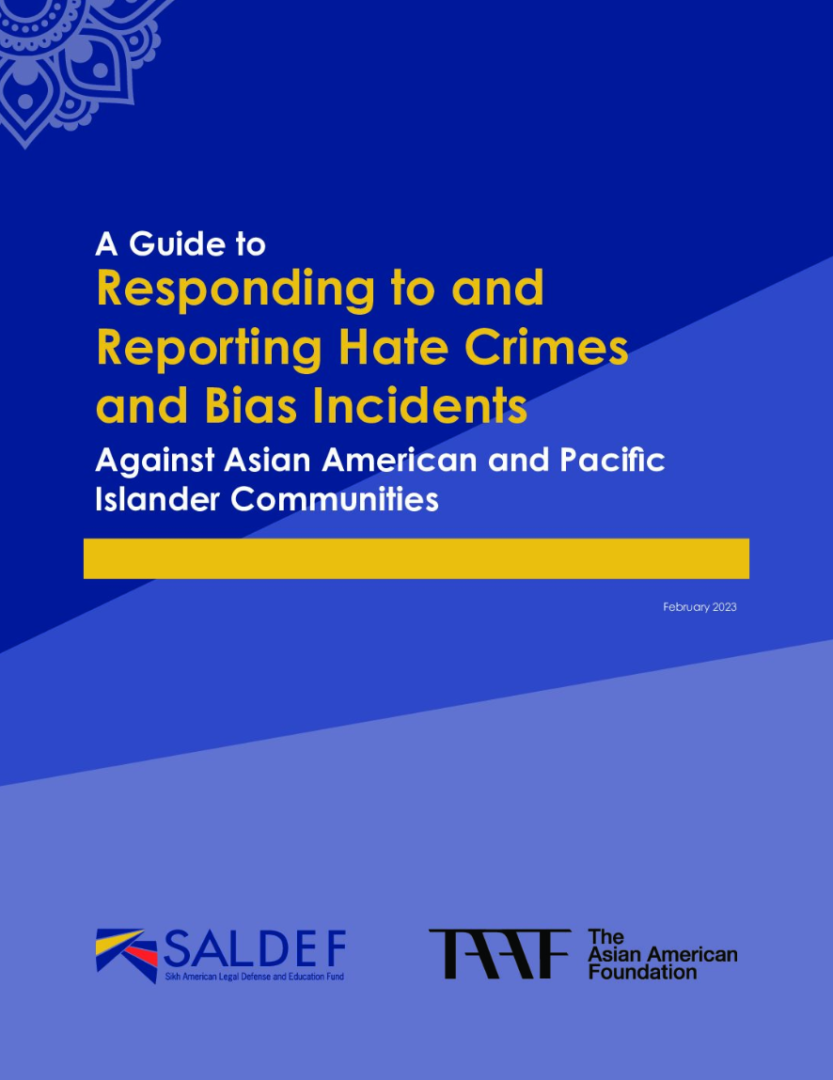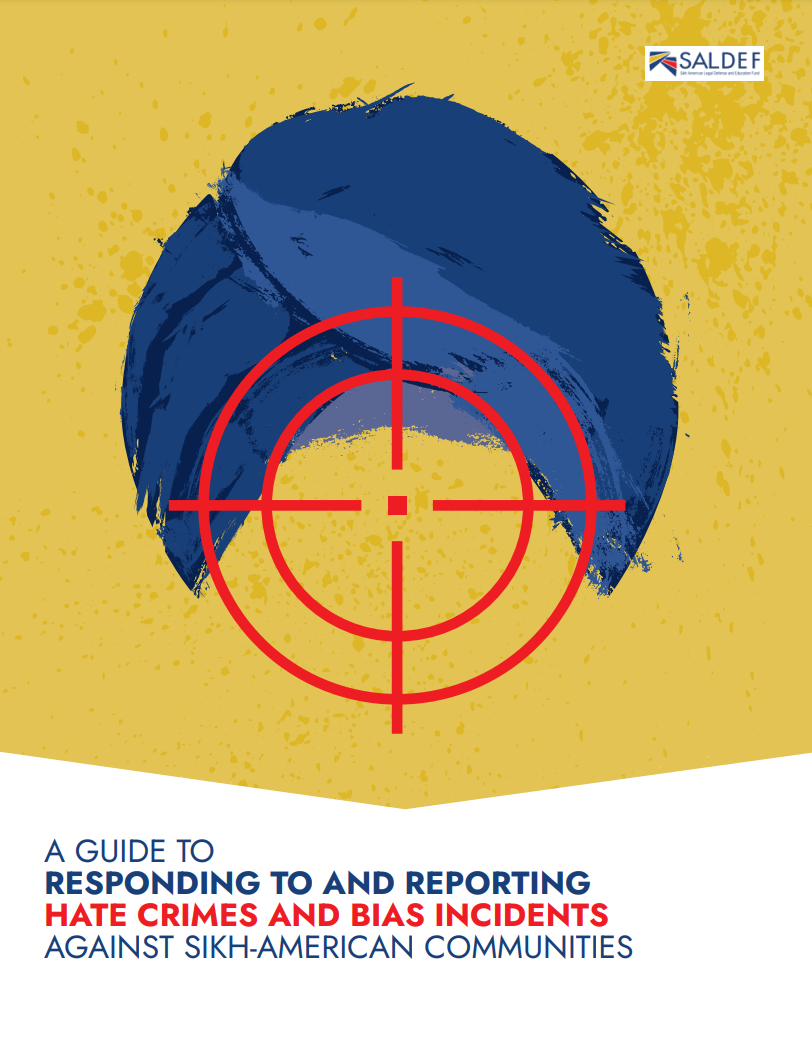Hate Crimes & Bias Incidents
Over the past few years the number of biased incidents and hate crimes targeting religious and minority communities has risen significantly. In this environment, Sikh American sangats across the United States have become more proactive in reporting acts of hate and bias to actively combat hate.
If you are a victim of a bias incident or a hate crime, you are not alone. We are here to help you. We hope the information provided here will help you take a step towards justice and healing.

A Guide to Responding to and Reporting Hate Crimes and Bias Incidents
In the last couple of years, the number of bias incidents and hate crimes towards the Asian Americans and Native Hawaiian, and Pacific Islanders Community (AANHPI) has risen significantly, impacting numerous individuals and communities across the United States.
We know that it can be difficult to navigate through the governmental agencies and the legal system in order to get justice or help. At times, it can feel isolating and confusing, and maybe you do not know where to go for advice, let alone support. This guide was created to help you understand who to report the incident or crime to, what to report, what to expect, and how to find community support.

A Guide to Responding to and Reporting Hate Crimes and Bias Incidents Against Sikh American Communities
Over the past few years the number of biased incidents and hate crimes targeting religious and minority communities has risen significantly. In this environment, Sikh American sangats across the United States have become more proactive in reporting acts of hate and bias to actively combat hate.
We know that it can be difficult to navigate through the governmental agencies and the legal system in order to get justice or help. At times, it can feel isolating and confusing, and maybe you do not know where to go for advice, let alone support. This pamphlet was created to help you understand who to report the incident or crime to, what to report, what to expect, and how to find community support.
Bullying
What can a person do if a student experiences discrimination based on shared ancestry or ethnic characteristics?
Public elementary and secondary schools as well as colleges and universities have a responsibility to investigate and address discrimination, including harassment, targeting students because of their race or national origin. When schools fail to take appropriate steps, the Educational Opportunities Section of the Civil Rights Division (CRT) at the U.S. Department of Justice and the Office for Civil Rights (OCR) at the U.S. Department of Education can help by enforcing federal laws that protect students from discrimination.
- If you believe a student has been treated unfairly—for example, treated differently, harassed, bullied, or retaliated against—because of their race or national origin, click here for the list of actions you can take.

How to Address School Bullying
Discrimination and harassment against Sikh students is an unfortunate reality for many children. This resource is designed to help parents navigate the different processes of how to report incidents and talk to their children in an informed way
Protecting Students from Discrimination Based on Ethnic Characteristics
Title VI of the Civil Rights Act of 1964 protects all students from discrimination based on race, color, or national origin in any program or activity receiving Federal financial assistance from the U.S. Department of Education.
- A new fact sheet from the U.S. Department of Education describes ways this protection covers students who are or are perceived to be Jewish, Christian, Muslim, Sikh, Hindu, Buddhist, or of another religious group.
Fact Sheet: Confronting Discrimination Based on Religion in Schools
On March 15, 2024, the Civil Rights Division (the Division) of the U.S. Department of Justice issued a resource for families and students on confronting discrimination based on religion in public schools. The document recognizes that in schools around the country, students have reported unfair treatment, bullying, and harassment because of their perceived or actual religious beliefs and practices. The document provides examples of the kinds of incidents the Division can investigate and reminds students and parents of specific actions that they can take when schools fail to respond to reports of harassment or other forms of discrimination. It also provides information on how to file a complaint with the Division.
